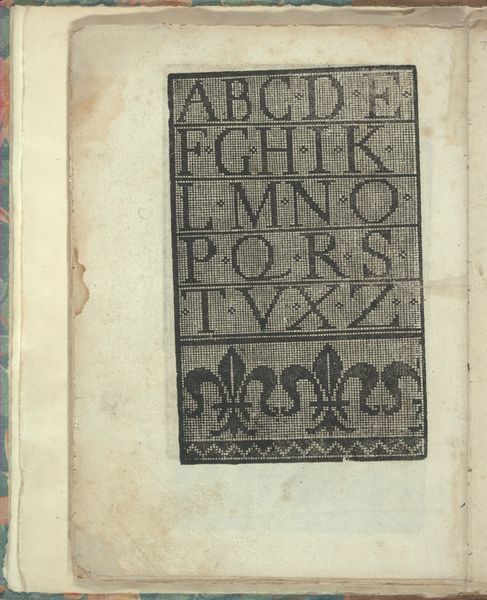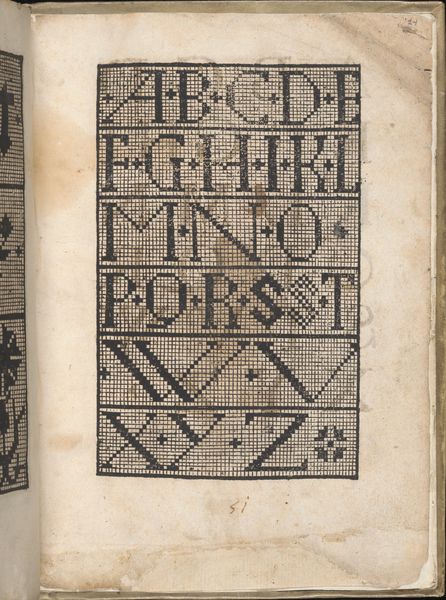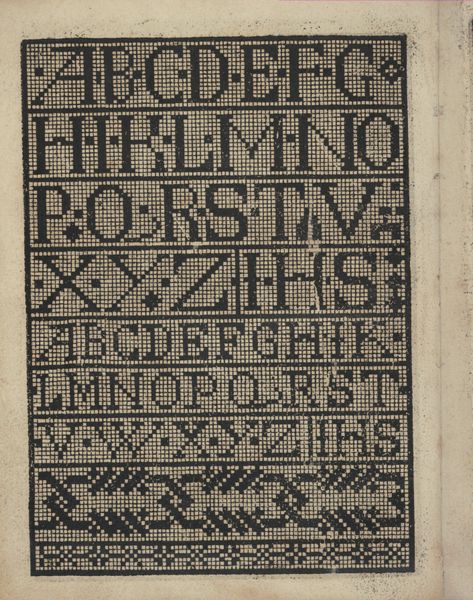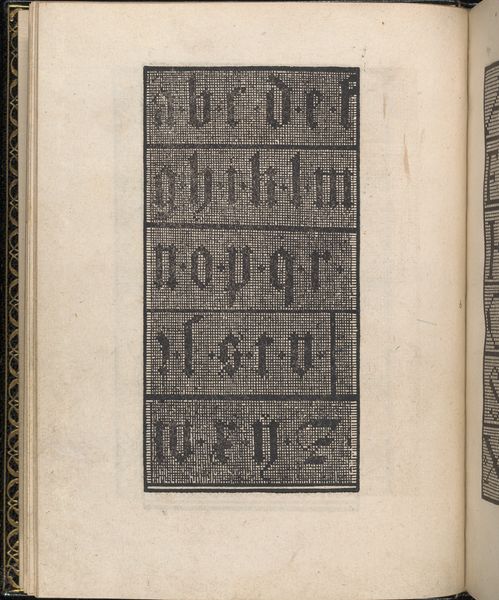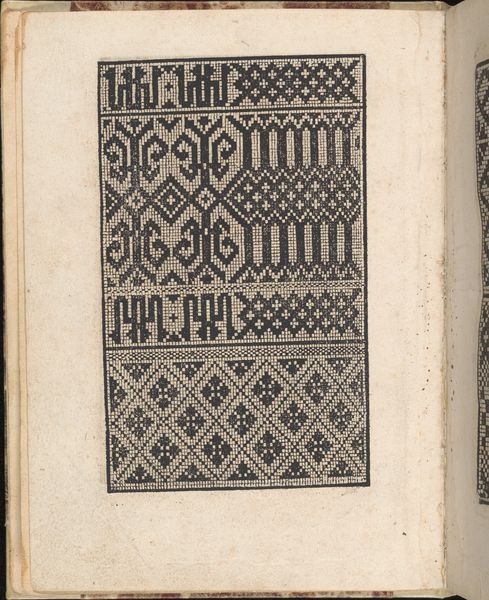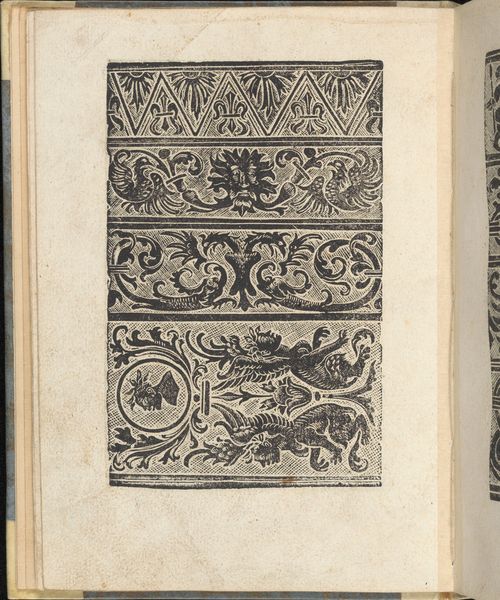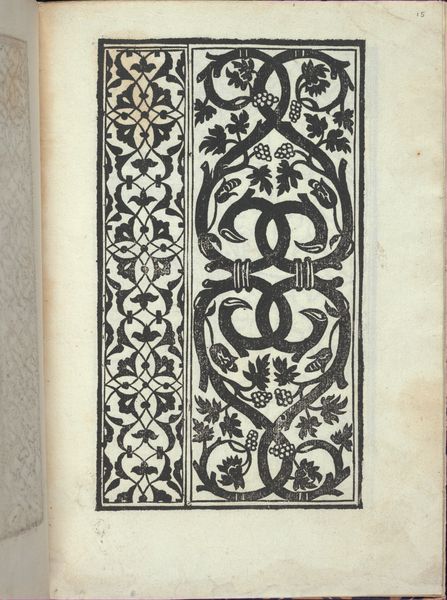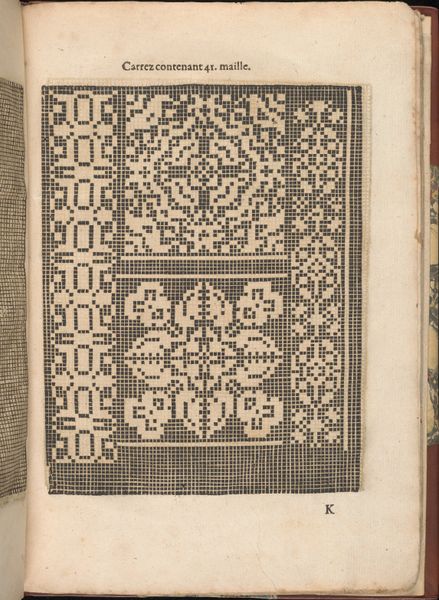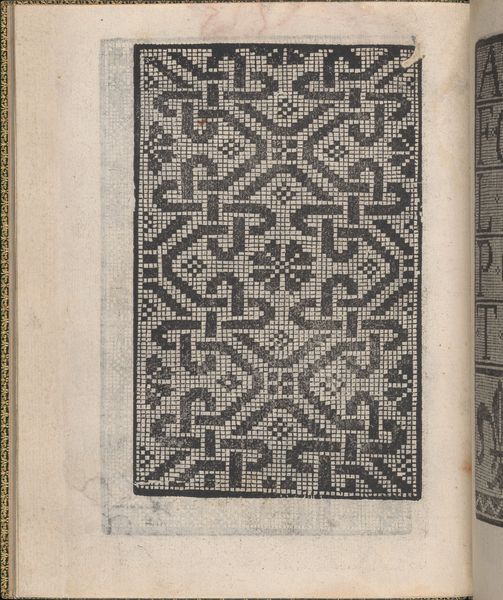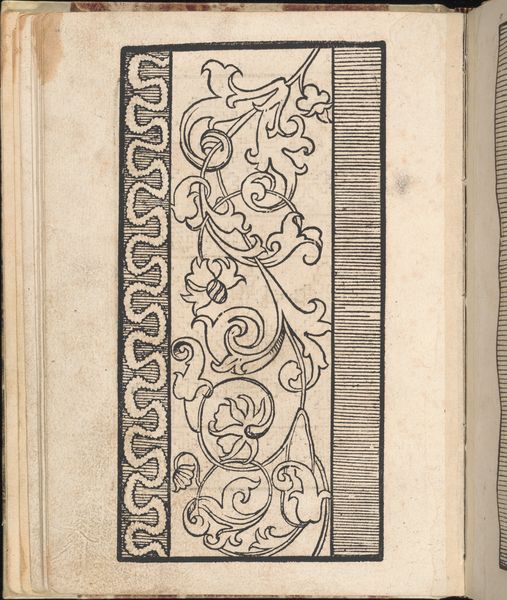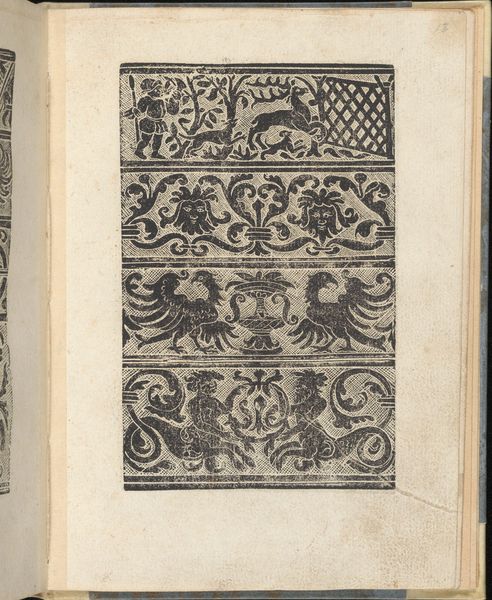
Ornamento delle belle & virtuose donne, page 10 (recto) 1554
0:00
0:00
drawing, graphic-art, ornament, print, typography, engraving
#
drawing
#
graphic-art
#
ornament
# print
#
book
#
11_renaissance
#
typography
#
italian-renaissance
#
engraving
Dimensions: Overall: 7 1/2 x 5 7/8 in. (19 x 15 cm)
Copyright: Public Domain
Editor: This is a page from "Ornamento delle belle & virtuose donne," a book by Matteo Pagano from 1554. It looks like a pattern for needlework, rendered as an engraving. What’s so intriguing is how functional and visually striking it is simultaneously. How do you read this image? Curator: It’s compelling to see this book marketed towards "beautiful and virtuous women," specifically as a source of ornamental patterns. In viewing this work, I can’t help but consider the social expectations placed on women of the time. Consider how their creativity was often channeled into domestic arts like needlework. The act of creating these patterns could be both empowering and confining, reflecting the complex social realities of the Italian Renaissance. Do you agree? Editor: I hadn't thought about that duality. The act of creation being both freeing and restricting, I find that intriguing. The very title sets a particular expectation for the reader and her supposed interests and capabilities. What's your read on the use of letterforms and decorative elements in conjunction? Curator: Precisely! The inclusion of the alphabet turns the ornamental into an instructional tool. However, the style of the letterforms and fleur-de-lis suggests the status that needlework could bestow. This craft gave women agency, yet it also served to reinforce their domestic role. How do you see this intersecting with modern craft practices today? Editor: This gives me a lot to reflect on. I am now considering its relevance within ongoing dialogues surrounding gender, labor, and artistic expression, not just in history, but today. Curator: Absolutely, reflecting on the conditions surrounding the work allows us to draw insights to consider issues relevant to the present day.
Comments
No comments
Be the first to comment and join the conversation on the ultimate creative platform.
